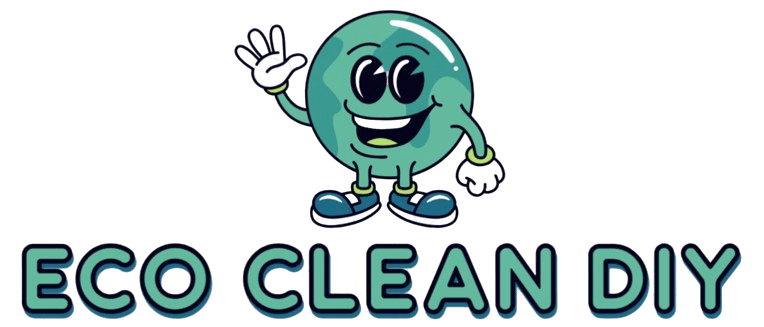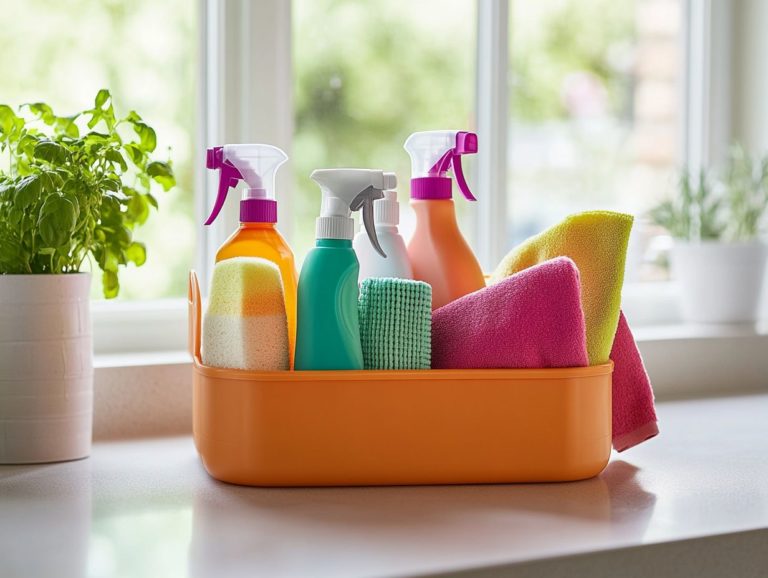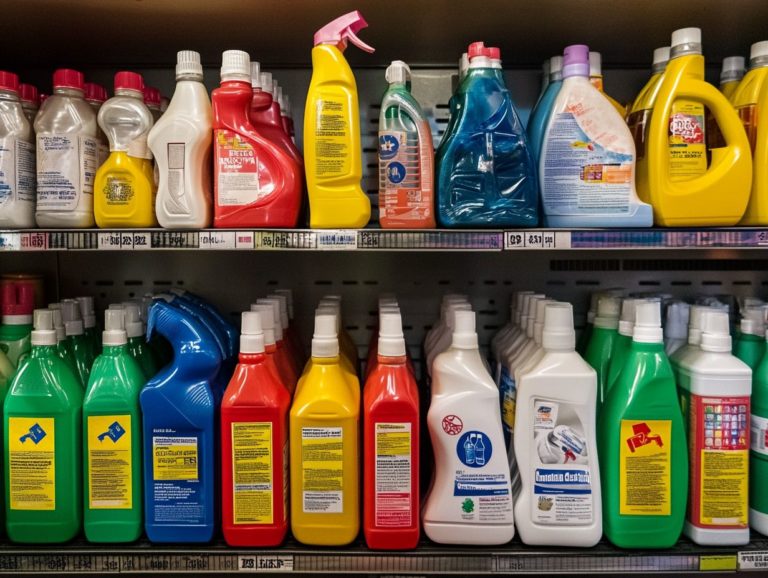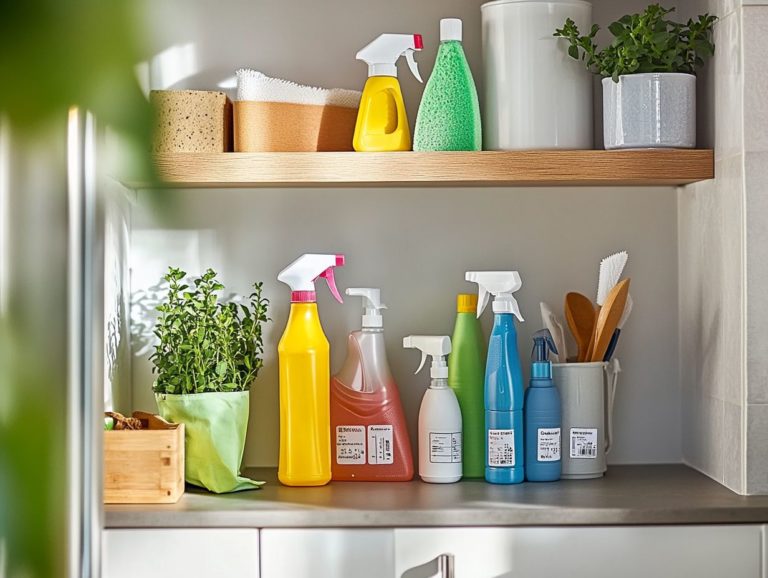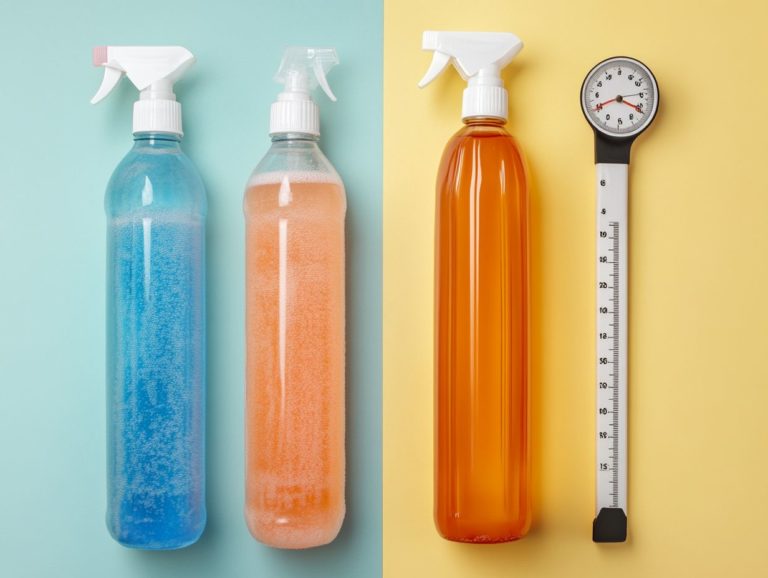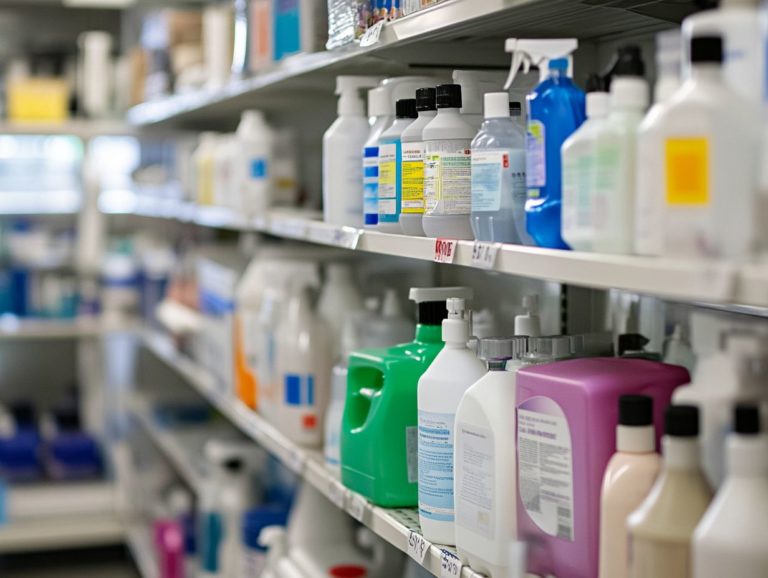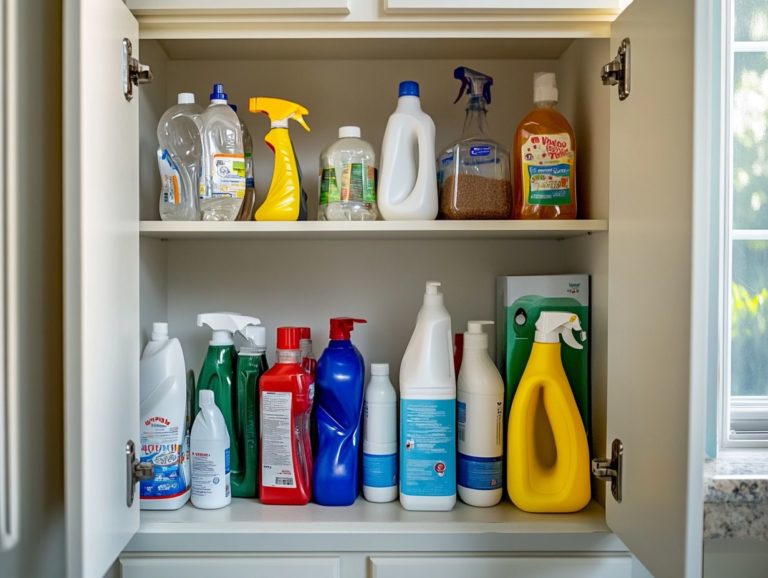How to Store Your Cleaners with Confidence
Cleaners are essential for keeping your home tidy and safe. If not stored properly, they can lead to accidents and spoilage.
Understanding different types of cleaners like chemical and natural is key to using them safely. This guide shows you the best ways to store both types, ensuring they work well and stay safe for your kids and pets.
From selecting the right containers to effective labeling and organization, you ll learn how to store your cleaners with complete confidence. Consider using products like IKEA and Brother P-Touch for improved home organization.
Contents
- Key Takeaways:
- Why Is Proper Storage of Cleaners Important?
- What Are the Different Types of Cleaners?
- How to Properly Store Chemical Cleaners?
- How to Properly Store Natural Cleaners?
- What Are the Best Storage Containers for Cleaners?
- How to Label and Organize Your Cleaners?
- Frequently Asked Questions
- 1. How can I ensure my cleaners are stored safely and securely?
- 2. What is the best way to organize my cleaning products?
- 3. Are there any cleaners that should not be stored together?
- 4. How can I prevent my cleaning products from spilling or leaking?
- 5. Can I store my cleaners in the original packaging?
- 6. How often should I check and replace my cleaning products?
Key Takeaways:
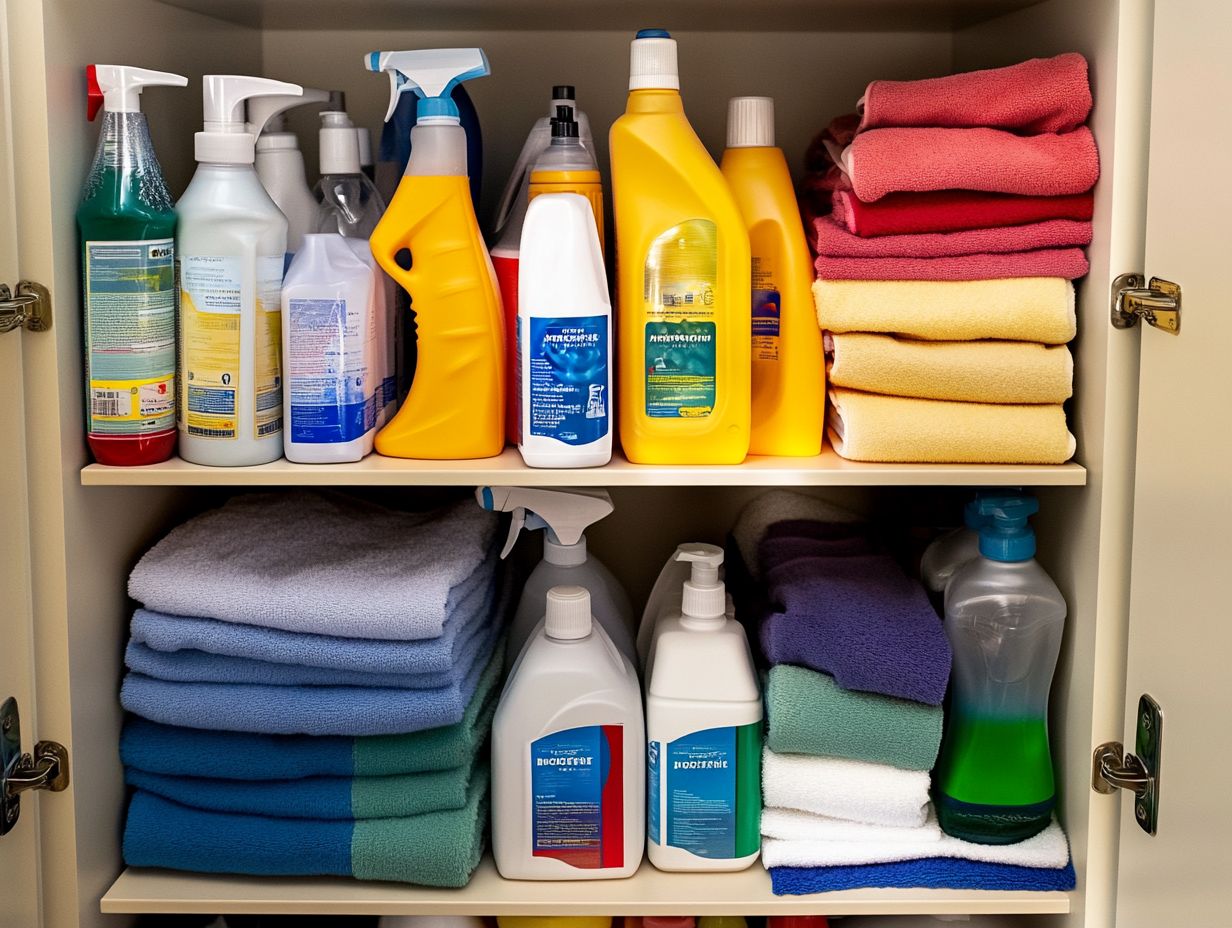
- Ensure proper storage of cleaners to maintain their effectiveness and safety.
- Keep chemical cleaners out of reach of children and pets. Store them in a cool, dry place, away from food and household items. Utilize storage solutions from brands like 3M Command and IKEA for better organization.
- Store natural cleaners in airtight containers, in a cool, dry place, away from sunlight and heat. Consider using brands like Clorox and Dawn for quality and effectiveness.
Why Is Proper Storage of Cleaners Important?
Proper storage of your cleaning supplies is crucial for ensuring both safety and effectiveness in your household cleaning routines.
Concerns about health issues and accidental exposure are high, especially due to the COVID-19 pandemic. Understanding the importance of proper storage is paramount.
Organizations like the National Capital Poison Center and the American Cleaning Institute provide valuable resources for poison prevention and safe cleaning.
The American Cleaning Institute emphasizes that secure and organized storage solutions can effectively prevent poisoning incidents, particularly in homes with children and pets.
By adopting safety precautions and utilizing tailored cleaning checklists, you can create a cleaner, safer home for you and your loved ones. For more information, you can contact the Poison Help Line at 1-800-222-1222.
What Are the Different Types of Cleaners?
In household cleaning, understanding the various types of cleaners is vital for effective techniques and creating a safe home.
Cleaners typically fall into two primary categories: chemical cleaners products made with synthetic ingredients and natural cleaners, which use plant-based components.
Each category has distinct properties, applications, and potential health concerns that can arise from improper use.
By understanding these classifications, you can make informed choices about which cleaning products to use and how to implement safety measures effectively.
1. Chemical Cleaners
Chemical cleaners are potent formulations crafted to tackle tough stains and effectively eliminate germs. However, they often contain dangerous chemicals that require careful handling. While they can deliver remarkable results in household cleaning, it s crucial to understand the potential health risks and safety precautions tied to their use.
Accidental exposure can lead to serious health issues, so following product labels and guidelines is essential when using these cleaning products. Products like Roborock Flexi Pro and Black & Decker tools can enhance your cleaning regimen.
Various types of chemical cleaners disinfectants, degreasers, and antibacterial solutions serve distinct purposes in maintaining cleanliness across different surfaces. For example, disinfectants are particularly effective at killing pathogens in kitchens and bathrooms, while degreasers excel at removing heavy grease from stovetops and ovens.
Using these powerful agents without proper safety measures, such as wearing gloves and ensuring adequate ventilation, can lead to harmful reactions, including respiratory problems or skin irritation.
Thus, prioritize safety by thoroughly reading labels and taking the necessary precautions to protect yourself and your surroundings.
2. Natural Cleaners
Natural cleaners have surged in popularity as environmentally-friendly alternatives to traditional chemical cleaners. You can easily create DIY solutions using simple ingredients like vinegar and baking soda. Watching HGTV or following Devon Delaney can provide additional insights and tips.
These cleaning products are heralded as safe options, significantly reducing the risk of health issues linked to chemical exposure. They effectively tackle many cleaning tasks and are gentler on both you and the environment.
By embracing these eco-friendly solutions, you support not only a healthier lifestyle but also contribute to a more sustainable planet. For example, a mixture of vinegar and water can effortlessly cut through grease on your kitchen surfaces, while baking soda acts as a gentle abrasive for scrubbing tasks. You can even enhance these cleaners with essential oils like tea tree or lavender, which boost their effectiveness and leave your space smelling delightful.
While natural cleaners are safer, remember they may not be strong enough for tough jobs. It s wise to consider their limitations in specific scenarios to ensure you achieve the desired results.
How to Properly Store Chemical Cleaners?
Proper storage of chemical cleaners is crucial for minimizing the risks associated with dangerous chemicals and ensuring the safety of children in your home. By adopting safety measures and implementing effective storage solutions, you can significantly reduce the chances of accidental exposure to these powerful cleaning products.
This involves carefully following the instructions on product labels, ensuring these cleaners are safely out of reach of children and pets, and organizing them in a cool, dry environment to preserve their effectiveness.
1. Keep Them Out of Reach of Children and Pets
Ensuring child safety in your home means storing chemical cleaners out of reach from children and pets, as accidental exposure can lead to serious health concerns. This is especially critical in households with young children who might stumble upon these hazardous substances.
Implement effective storage solutions, such as placing cleaners in high cabinets or using locked storage areas, to significantly lower the risk of harmful incidents.
Equip cabinets with child-proof locks and organize your cleaning supplies in dedicated, secure spaces to further strengthen your safety measures. For additional child-proofing tips, explore resources from HGTV and 3M Command.
Clear labeling of chemicals, along with engaging discussions with older children about the potential dangers of these products, encourages a proactive safety approach. Consider exploring alternatives like natural cleaning solutions to reduce the presence of hazardous chemicals in your home altogether. Ultimately, maintaining vigilance in storing cleaners out of reach, along with fostering open conversations about safety, will create a protective environment that ensures the well-being of those who matter most to you.
2. Store in a Cool, Dry Place
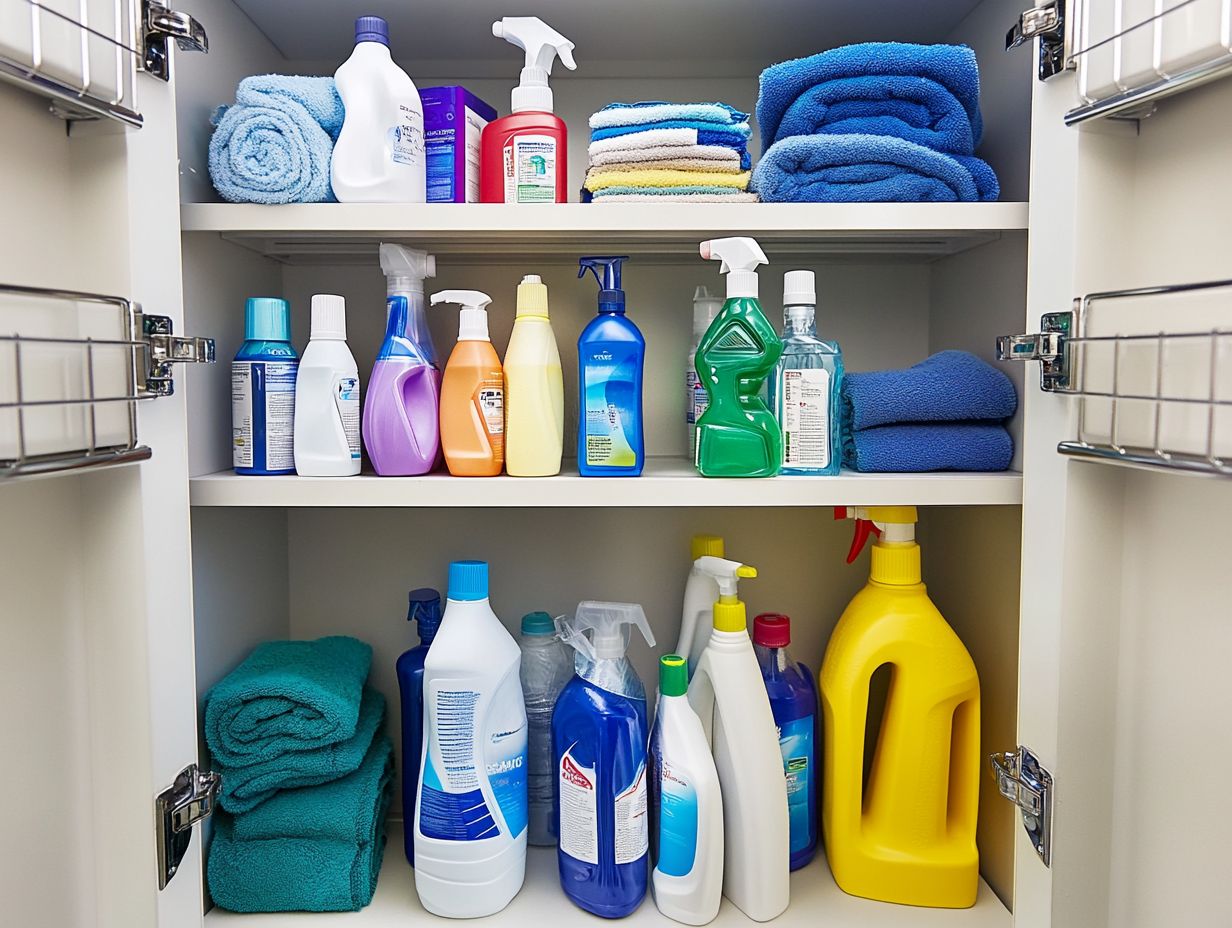
Storing chemical cleaners in a cool, dry place is essential for preserving their effectiveness and preventing the degradation of hazardous substances. When exposed to heat and moisture, the integrity of these cleaning products can be compromised, increasing the risk of unwanted chemical reactions and diminishing their cleaning power.
Ignoring this can lead to serious problems, such as the release of harmful fumes or the formation of toxic residues harmful substances that can linger after using cleaning products that pose health risks. When chemical cleaners are stored correctly, they maintain their potency and safe use, effectively tackling tough stains and sanitizing surfaces.
Thus, by maintaining optimal storage conditions, you not only extend the shelf life of these products but also protect yourself and others, especially in households with children and pets. Following simple rules, such as keeping cleaner containers tightly sealed and away from direct sunlight, significantly contributes to a safe and effective cleaning regimen.
3. Separate from Food and Other Household Items
To ensure your safety and prevent contamination, it s vital to store chemical cleaners separately from food and other household items. Mixing these hazardous substances with your consumables can lead to accidental ingestion or chemical reactions that pose serious health risks. By adopting proper storage practices like establishing designated areas for cleaning supplies you can effectively mitigate these dangers.
One smart strategy is to create a dedicated cabinet or shelf specifically for cleaning supplies, ideally positioned in a high and hard-to-reach place, well away from any food storage areas. For example, placing all cleaning products in a locked cupboard can keep curious children or pets from getting their hands on them.
Using clear, labeled containers for these chemicals helps you quickly identify their contents while reinforcing the practice of keeping hazardous materials distinct from pantry goods or kitchen utensils. By implementing these storage solutions, you not only cultivate a more organized home but also significantly enhance the safety of your household.
How to Properly Store Natural Cleaners?
Storing natural cleaners correctly is important! Proper storage is crucial for maintaining their efficacy and extending their shelf life, particularly when it comes to DIY solutions crafted from ingredients like vinegar and essential oils.
Use airtight containers to protect these products from air and moisture. Both can diminish their quality over time. This is particularly important for cleaning products to avoid contamination and extend their shelf life.
By adhering to a few straightforward safety tips and storage guidelines, you can ensure that your natural cleaners remain effective and safe for all your household needs. Additionally, following these tips can aid in poison prevention, especially in homes with children or pets.
1. Keep Them in Airtight Containers
Keeping your natural cleaners in airtight containers is essential for maintaining their effectiveness and preventing contamination. These containers act as a protective barrier against air and moisture exposure, which can lead to unpleasant odors and diminished potency over time.
By adopting this proper storage technique, you can ensure that your DIY cleaning products remain safe and ready for use. This is a key aspect of proper storage and home organization.
Airtight containers not only extend the shelf life of your eco-friendly solutions but also allow you to enjoy their benefits without the constant hassle of replenishment. Use dark containers to protect sensitive ingredients and further enhance their durability, ensuring that your cleaners remain effective for longer periods. This thoughtful preservation approach not only saves you time and money but also supports a more sustainable lifestyle. Proper storage is crucial to avoid accidental exposure to degraded or contaminated products.
Storing your natural cleaners in these containers enhances safety by reducing the risk of accidental spills or leaks that could cause harm. So, if you want to use effective, eco-friendly cleaning solutions, make storage a priority!
Don t wait! Proper storage now means safer cleaning later.
2. Store in a Cool, Dry Place
Storing your natural cleaners in a cool, dry place is essential for keeping them effective and preventing the growth of harmful bacteria or mold. Excessive heat or humidity can change how the ingredients work together, potentially leading to health issues for you and your loved ones.
By ensuring these cleaners are kept in the right conditions, you can practice safe cleaning techniques with confidence. Experts at the American Cleaning Institute endorse this practice, which is especially important during the ongoing COVID-19 outbreak.
Proper storage not only maintains the quality of the ingredients but also enhances their longevity. This allows you to make the most of your purchases. Given the delicate nature of natural formulations, it s vital to avoid direct sunlight and extreme temperature fluctuations.
Don t overlook the importance of using the original containers; they often come equipped with protective seals and labels that ensure safe storage. Always refer to product labels for specific storage instructions to prevent health problems.
By being mindful of these conditions, you ll significantly reduce the risk of contamination and ensure that each cleaning session is both safe and effective. This is especially crucial to prevent exposure to potentially dangerous materials.
3. Avoid Sunlight and Heat Exposure
Keep your cleaners safe and effective by storing them away from sunlight and heat exposure during storage. Ultraviolet rays can break down the components of these cleaning products, reducing their effectiveness and potentially leading to health concerns.
Heat can accelerate chemical reactions within these products, which may lead to the release of harmful fumes or degradation of essential ingredients. For optimal preservation, store your natural cleaners in cool, dark spaces like cabinets or pantry shelves.
Opt for glass or non-translucent containers, as they provide better protection against light exposure. Always ensure the lids are tightly sealed to prevent contamination and evaporation.
Regularly check expiration dates to ensure safety don t risk using ineffective products. By following these storage guidelines, you can prolong the lifespan of your natural cleaners and enhance their cleaning efficiency. Always make sure you have enough laundry detergent and other essential supplies to avoid last-minute shopping.
What Are the Best Storage Containers for Cleaners?
Selecting the ideal storage containers for your cleaning supplies is vital for maintaining organization and ensuring safety in your home. There are various types of containers available that can effectively accommodate both chemical and natural cleaners, each with its distinct advantages for optimal storage.
By choosing the right storage solutions, you can enhance safety and streamline your household cleaning processes, making your cleaning routine more efficient and manageable.
1. Plastic Bottles with Tight Lids
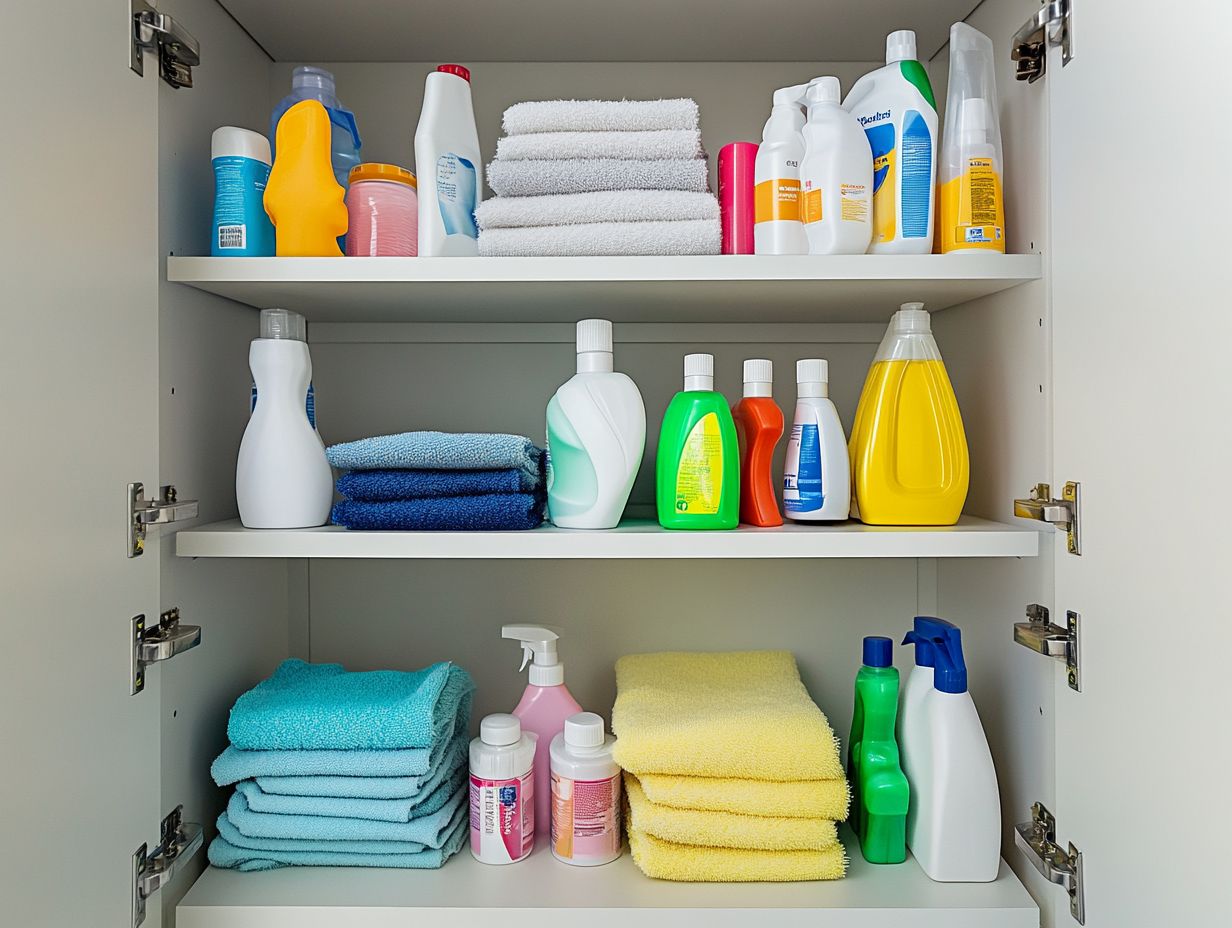
Plastic bottles with tight lids are versatile storage containers perfect for organizing your cleaning supplies, ensuring safety, and preventing spills. Their lightweight design and availability in various sizes make them an excellent choice for both chemical and natural cleaners.
It s crucial to clearly label these containers to avoid mix-ups and promote proper safety measures. This clarity in labeling facilitates quick identification of contents and significantly reduces the risk of accidents, especially in households with children or pets.
Opting for plastic for storage is also cost-effective and helps in minimizing clutter. Make sure to follow child safety guidelines recommended by the National Capital Poison Center and keep the Poison Help Line number (1-800-222-1222) handy.
However, consider the types of substances you re storing, as certain chemicals might react with specific plastics over time, potentially leading to degradation of the bottle or contamination of the stored items.
Selecting the right grade of plastic and keeping an eye out for any signs of wear are wise practices to ensure safe storage.
Start organizing your cleaning supplies today!
2. Glass Jars with Airtight Lids
Glass jars with airtight lids offer you an elegant and effective solution for storing natural cleaners, ensuring their effectiveness while preventing contamination. These containers not only keep your products fresh but also look nice, helping you organize your household cleaning supplies.
With the transparency of glass, you can easily identify the contents, making your cleaning tasks more efficient.
Glass jars are safer than plastic ones. They won’t leach harmful chemicals into your stored products. This means your natural cleaners remain pure, giving you peace of mind as an environmentally-conscious consumer.
While it’s true that glass can be fragile and may shatter if dropped something to consider if there are children or pets in your home the advantages of using glass jars for organization greatly outweigh these concerns. They provide a stylish presentation while also ensuring a practical approach to safety in your household cleaning routine.
For a touch of elegance, consider displaying them on a shelf inspired by the Museum of Modern Art in New York.
3. Spray Bottles with Trigger Sprayers
Spray bottles equipped with trigger sprayers serve as exceptional storage solutions for your DIY cleaning products and commercial cleaning supplies. They offer you the convenience of application and controlled usage. By ensuring that your spray bottles are properly labeled, you enhance your organization and promote safe cleaning practices, minimizing the risk of misuse or accidental exposure to harmful substances.
These bottles are particularly beneficial for products that require precise application techniques. Check out products from Clorox and Dawn; you ll love their reliability!
Beyond their practical advantages, spray bottles are designed with safety features such as secure closures and durable materials that can withstand a variety of cleaning agents. This makes them perfect for storing everything from glass cleaners to multi-surface disinfectants.
Using spray bottles helps you clean systematically. They keep dangerous cleaning products out of reach and easily identifiable. Their compact size allows for effortless storage in shelves or cupboards, contributing to a tidy and organized cleaning environment.
Embracing these versatile tools will significantly elevate your overall cleaning efficiency and safety. For enhanced organization, use labeling tools like the Brother P-Touch.
How to Label and Organize Your Cleaners?
Labeling and organizing your cleaning supplies is an essential step toward achieving efficient and safe cleaning practices in your home. By establishing an effective labeling system and following cleaning checklists, you can easily identify the right products for each task. Using resources from HGTV can provide additional insights into home organization and storage solutions.
This approach significantly reduces the risk of accidental exposure to hazardous substances. Proper organization improves accessibility and reinforces safety protocols, ensuring you consistently adhere to product labels.
Don t wait! Start organizing your cleaners today for a safer home!
1. Label Bottles Clearly
Labeling your cleaning bottles clearly is essential for promoting safe practices. It ensures that you can effortlessly identify the contents of each container. By using bold, legible text and including important information like product names and safety precautions, you can significantly reduce the risk of accidental exposure to hazardous substances.
Clear labeling makes cleaning safer and easier! It aids in following product instructions and enhances overall organization. Always follow the guidelines provided by the American Cleaning Institute for best practices.
To boost the visibility of your labels, choose a font size that is easily readable from a distance. Colors also play a crucial role; ensure high contrast between text and background for quick recognition. Utilizing color coding, which means using different colors to signify different products, can further help in identifying them swiftly. Consider using 3M Command strips for affixing labels securely.
Position your labels at eye level where they can be most easily seen. By following these best practices, you provide vital information about household cleaning, create a safer cleaning environment, and promote child safety and poison prevention.
2. Organize by Type or Use
Organizing your cleaning supplies by type or use can speed up your cleaning process and help you implement cleaning checklists. Group similar products together like all-purpose cleaners, laundry detergents, and disinfectants to streamline your routines and ensure that the right products are always at your fingertips.
This method of home organization simplifies your process and reinforces safety tips by reducing the chances of confusion or misuse of hazardous substances.
For example, categorizing products based on specific tasks, such as kitchen cleaning versus bathroom sanitization, makes your efforts feel more intuitive. You might consider maintaining a separate bin for high-usage items, ensuring that frequently needed supplies are always within reach.
Using clear containers with labels from brands like Brother P-Touch can help you quickly identify what you need without rummaging through a cluttered space. Implementing these organizational systems reduces the time spent searching for supplies, creating a cleaner and more efficient cleaning environment with proper storage.
3. Keep a List of What You Have
Maintaining a list of cleaning supplies is vital for ensuring you have an accurate inventory. This allows you to quickly identify what you need for your household cleaning tasks. Regularly updating this list helps avoid purchasing duplicate products and ensures you re fully equipped for your cleaning checklists.
This organizational strategy not only boosts efficiency but also supports safety by giving you a clear understanding of your supplies, preventing accidental exposure to hazardous substances.
You can enhance this practice by using various tools for tracking your supplies. A simple spreadsheet works well for digital organization. Mobile apps designed for inventory management offer real-time updates and notifications when your stock levels dip. If you prefer a traditional approach, a handwritten notebook can serve as an effective inventory log.
You can also consult resources like the American Cleaning Institute or the National Capital Poison Center for guidelines on maintaining a safe inventory. Being able to glance at your cleaning supplies saves time and prevents those last-minute scrambles to find necessary items, paving the way for a more streamlined and stress-free cleaning routine.
Remember, in the event of accidental exposure, contact the Poison Help Line at 1-800-222-1222 for immediate assistance.
For more tips on home cleaning and safety, check out resources from HGTV and Devon Delaney. You might also find innovative cleaning tools like the Roborock Flexi Pro and storage solutions from IKEA helpful.
Start organizing your cleaning supplies today to make your routine safer and more efficient!
Frequently Asked Questions
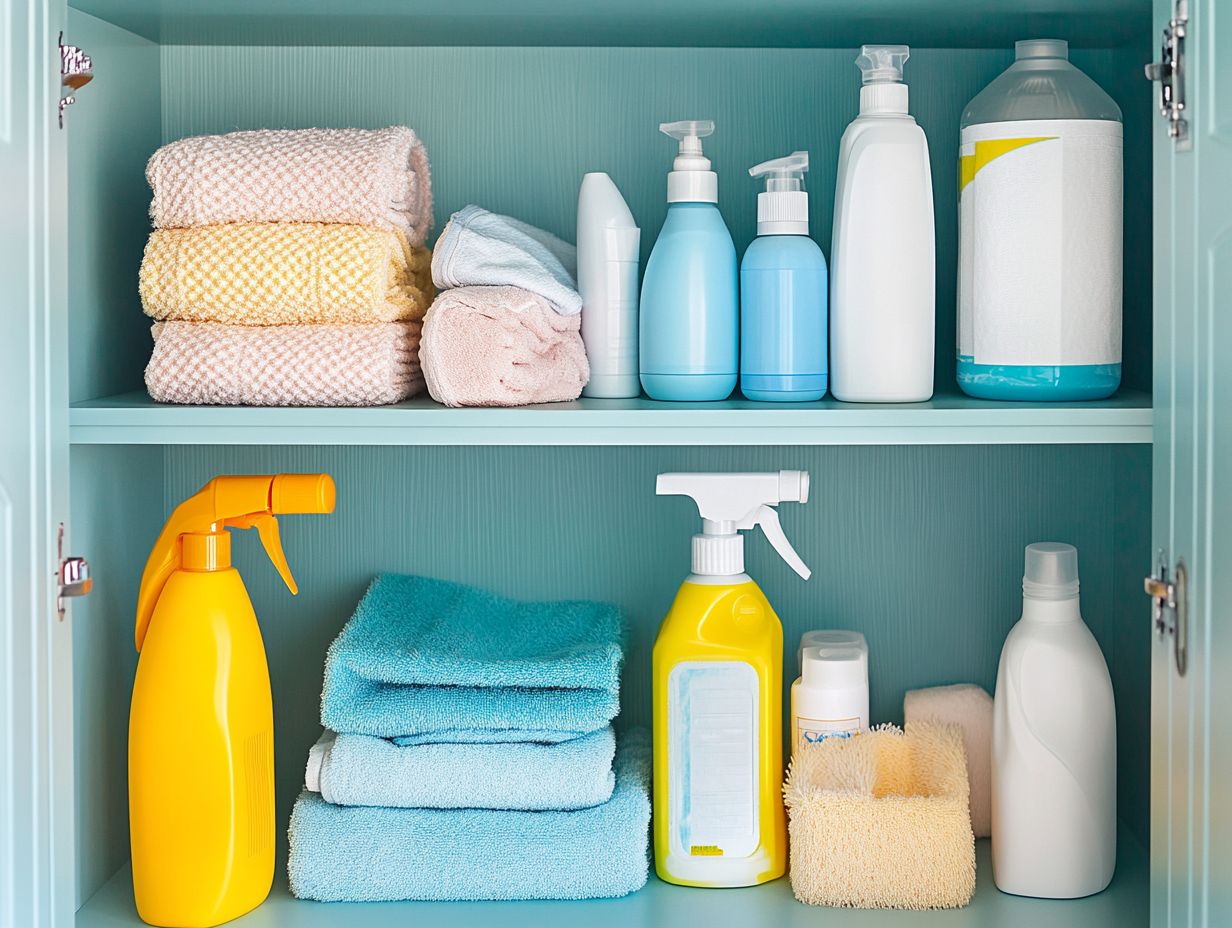
1. How can I ensure my cleaners are stored safely and securely?
For more information, you can consult the American Cleaning Institute and the National Capital Poison Center.
To store your cleaners with confidence, keep them in a cool, dry place away from direct sunlight and heat sources. This prevents chemical reactions or deterioration of the products.
Proper storage also helps prevent health problems caused by dangerous chemicals.
2. What is the best way to organize my cleaning products?
To keep your cleaners organized, consider grouping them by type (i.e., all-purpose cleaners, bathroom cleaners, etc.) or by frequency of use. This makes it easier to find what you need and prevents spills or leaks from spreading to other products.
Brands like Clorox and 3M Command offer excellent storage solutions.
3. Are there any cleaners that should not be stored together?
Yes, keep bleach-based cleaners separate from ammonia-based cleaners. Mixing them can create harmful fumes. It’s also best to store any cleaners containing bleach on their own, as they can react with other chemicals.
For instance, vinegar should never be mixed with bleach due to the risk of producing toxic fumes.
4. How can I prevent my cleaning products from spilling or leaking?
Being prepared is essential. In case of emergencies, remember that the Poison Help Line can be reached at 1-800-222-1222.
To prevent spills and leaks, tighten all caps and lids securely before storing. You can also place a towel or paper towels underneath the products to absorb any potential leaks. Using DIY cleaning solutions like Dawn and vinegar can minimize the need for multiple, potentially hazardous products.
5. Can I store my cleaners in the original packaging?
While it’s fine to store some cleaners in their original packaging, transfer products that come in flimsy containers to sturdier, leak-proof containers. This prevents accidents or spills. For example, consider transferring liquid laundry packets to a durable, child-proof container for added safety precautions.
6. How often should I check and replace my cleaning products?
Stay safe and effective by regularly checking your cleaning supplies. It’s a simple step that can make a big difference! Products from brands like Clorox and Dawn often have clear expiration dates to guide you.
Regularly check the expiration dates of your cleaning products and replace them as needed. It’s also important to replace any products that have been contaminated or have changed in appearance or smell. Keeping a regular schedule for replacing products can help ensure their effectiveness and safety. With the ongoing COVID-19 outbreak, it’s essential to have fresh disinfectants ready at all times for safe cleaning practices.
Take control of your cleaning supplies today! Follow these tips to ensure a safe and organized cleaning routine.
